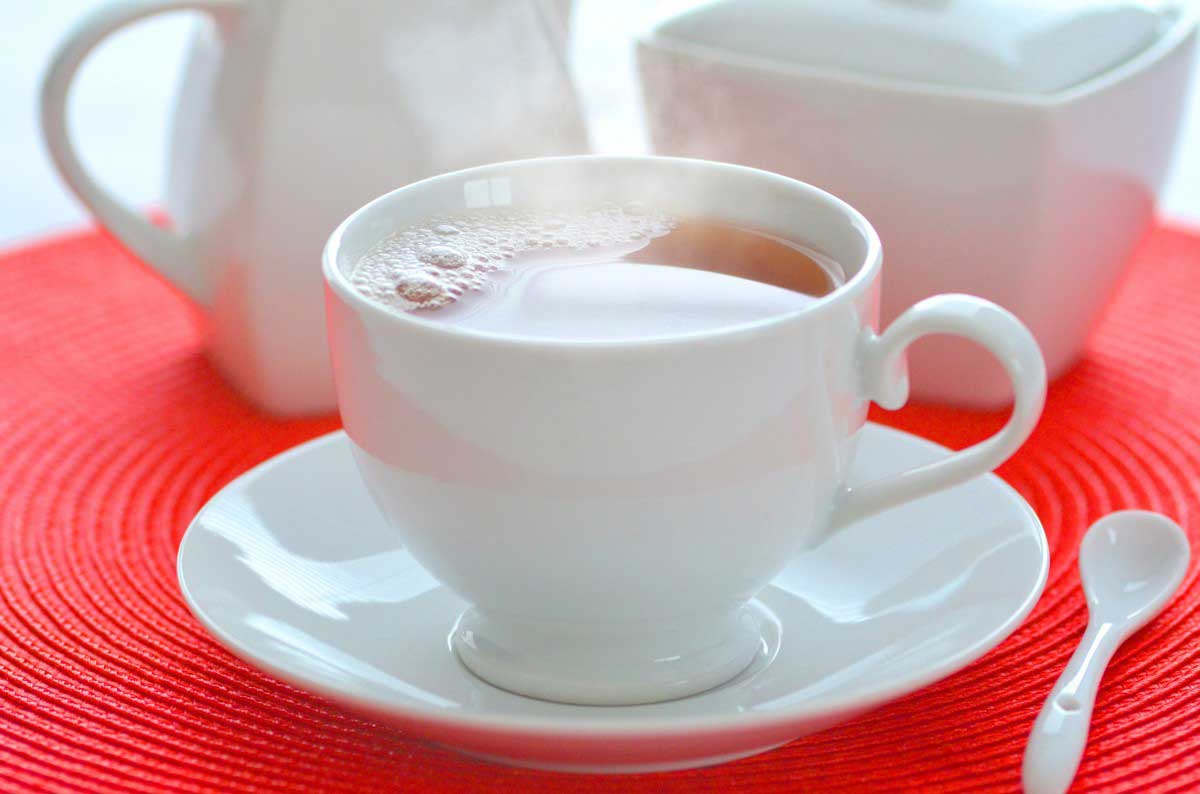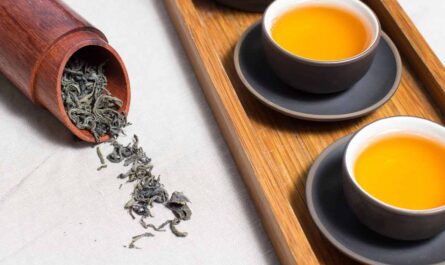What are some of the caffeine in Tea interesting, fun, cool, amazing facts? Caffeine, the beloved and widely consumed stimulant found naturally in tea, offers a wealth of intriguing and captivating facts that unveil the hidden complexities of this compound. From its historical significance to its surprising effects on the human body, here are some remarkable and captivating details about caffeine in tea.
In the world of tea and caffeine, each cup unveils a rich tapestry of history, chemistry, and culture. From ancient legends to modern research, the captivating facts surrounding caffeine in tea are as diverse and intricate as the brews themselves, ensuring that the world of tea remains an endlessly fascinating realm to explore.
Interesting Facts About Caffeine in Tea
Whether you’re seeking that morning pick-me-up or striving to avoid the stimulating effects of caffeine altogether, it’s imperative to be mindful of the caffeine content when choosing your tea. The spectrum of caffeinated teas spans from those with mere trace amounts to robust varieties that contain roughly half the caffeine found in a standard cup of coffee. It’s worth noting that herbal and rooibos teas offer a caffeine-free alternative for those who prefer to steer clear of this stimulating substance.
1. Diverse Tea Selections
Many individuals in search of an alternative to coffee gravitate towards tea, which provides a gentler yet invigorating start to their day, thanks to its moderate caffeine content. Take pride in curating a diverse range of teas, each offering a unique caffeine experience. From robust Indian black teas that awaken your senses to caffeine-free tisanes that soothe the soul, our collection caters to every tea lover’s palate.
2. The Complexities of Caffeine Levels in Tea
Determining the precise caffeine content in loose leaf tea is a nuanced endeavor influenced by various factors. Tea’s caffeine concentration can fluctuate significantly, ranging from roughly half that of a cup of coffee to barely detectable traces. Yet, ascertaining the caffeine content of a particular tea often proves to be a challenging task, one that may require the controlled environment of a laboratory.
While conventional wisdom assumes that black tea packs more caffeine, green and white teas are gentler on the caffeine scale, with oolong occupying a middle ground, reality paints a more intricate picture. The caffeine content of a tea defies easy categorization. It hinges on multifaceted variables such as when the tea leaves were harvested, the intricacies of the processing methods employed, and the specific varietals of the tea plant from which they originate.
Furthermore, the brewing process introduces an additional layer of complexity. Factors such as water temperature, the quantity of tea leaves used, and steeping duration significantly influence the caffeine concentration in the final cup. It’s important to note that individual sensitivities and biochemistry also play a role in how caffeine affects each person uniquely, adding yet another layer of complexity to this intricate puzzle. In essence, the caffeine content in tea is a multifaceted interplay of numerous variables, rendering precise quantification a daunting endeavor.
3. Ancient Origins: The Serendipitous Discovery of Tea
Embarking on a journey into the depths of history, we uncover the enduring allure of tea, a beverage rich in caffeine that has been cherished for millennia. The captivating tale begins with the legendary Chinese Emperor Shen Nong, dating back to a staggering 2737 BCE. In a twist of fate, while boiling water, tea leaves gracefully tumbled into his vessel, introducing the world not only to tea but also initiating our profound and enduring relationship with the enigmatic stimulant known as caffeine.
4. Brewing Alchemy: Crafting the Perfect Cup of Caffeine
The act of brewing tea metamorphoses into an enchanting and precise art form when caffeine enters the equation. The temperature at which water is heated, the duration of steeping, and the meticulously balanced tea-to-water ratio all become variables in this alchemical process. Tea enthusiasts wield these variables to achieve the desired caffeine levels in their cup, orchestrating a ballet of flavor and caffeine intensity where infusion time and temperature perform a delicate pas de deux. Tea, Coffee, Energy Drinks, Juice, Beverage, Smoothie, and more
5. Healthful Surprises: The Multifaceted Wellness of Tea’s Caffeine
Beneath its guise as a stimulant, caffeine in tea unfurls a multifaceted tapestry of health benefits that continues to captivate the gaze of researchers. From its potential to ignite metabolism and assist in weight management to its impressive antioxidant-rich nature, which valiantly combats oxidative stress, caffeine in tea emerges as a profound contributor to overall wellness.
6. Cultural Significance: Tea’s Thread in the Fabric of Society
Tea, laden with caffeine, has woven itself into the very fabric of countless cultures worldwide. The Japanese tea ceremony, steeped in tradition and ritual, the British afternoon tea tradition, and the Moroccan mint tea rituals, to name a mere few, stand as testament to the indelible mark caffeine-rich tea has left on societies. It nurtures connection, safeguards tradition, and births cherished moments.
7. Caffeine’s Quirks: The Personalized Experience
Revelation dawns as we recognize that caffeine is not an equal experience for all. It weaves its effects with subtlety or intensity, shaped by the intricate interplay of genetics and metabolism. For some, a cup of tea ushers in an invigorating wakefulness, while for others, navigating its stimulating waters requires caution and introspection, a testament to caffeine’s enigmatic and unique nature in each individual’s journey.
8. Diverse Tea Varieties: A Caffeinated Symphony of Flavors
Tea aficionados find themselves immersed in a captivating tapestry of diversity when it comes to this revered beverage. The world of tea unfolds in a mesmerizing array of varieties, each offering its unique caffeine profile. The grandeur of black tea, renowned for its bold and robust flavors, reigns supreme in caffeine content. Meanwhile, green tea, with its delicate and milder essence, provides a more subtle dose. Oolong tea, the graceful intermediary, beautifully exemplifies the intricate nature of caffeine’s presence within this ancient elixir.
9. Chemical Jigsaw: Caffeine’s Molecular Mastery
At the heart of this caffeinated saga lies caffeine itself, scientifically referred to as 1,3,7-trimethylxanthine. It emerges as a masterstroke of molecular craftsmanship, playing the role of a central nervous system stimulant with finesse. Its mechanism of action involves the deft blocking of adenosine receptors, effectively thwarting drowsiness and bestowing upon those who partake in its embrace a state of heightened alertness.
10. Theanine Synergy: A Harmonious Caffeinated Ballet
The synergy that unfolds between caffeine and the amino acid theanine, found abundantly within tea leaves, is nothing short of revelatory. This natural collaboration not only elevates cognitive functions but also deftly tempers the jittery side effects often associated with caffeine consumption. The result is a state of tranquil focus, a delicate equilibrium that is both extraordinary and remarkable.
11. Amount of Tea Leaves: A Matter of Proportion
The quantity of tea leaves used is a straightforward yet impactful factor. Simply put, the more tea leaves you employ, the higher the caffeine content in your cup. For those seeking a robust, full-bodied brew, a generous amount of tea can be used, exceeding the typical recommendation of one teaspoon per six ounces. Conversely, reducing the quantity of tea leaves offers a means to dial down the caffeine level for a milder infusion, catering to diverse preferences.
12. Tea Varietal: A Fundamental Influence
At the core of understanding caffeine content in tea lies the tea plant itself, Camellia sinensis. All teas, regardless of whether they undergo a decaffeination process, inherently contain some caffeine. The tea plant exhibits two primary varietals: Camellia sinensis var. sinensis, hailing from China, which tends to possess a lower caffeine profile, and Camellia sinensis var. assamica, native to India, known for its relatively higher caffeine content. These varietals form the foundation upon which the caffeine content of a tea is built.
13. Harvest Time: A Seasonal Nuance
The timing of tea harvest plays a pivotal role in determining caffeine levels. Teas plucked during the spring season often boast higher caffeine content compared to those harvested later in the year. This phenomenon is especially pronounced in teas like Jasmine Silver Needle, which comprise the tender, downy buds and tips of the tea plant.
14. Growing Practices: The Shade’s Influence
The cultivation of tea under shaded conditions is yet another intriguing factor. Shade-grown teas, such as Gyokuro and Kabusecha in the realm of green teas, and the revered matcha, undergo a distinctive transformation. The shading process initiates a stress response within the tea plant, leading to an increase in caffeine, l-theanine, and chlorophyll levels, as the plant endeavors to compensate for diminished sunlight.
15. Processing Methods: The Art of Transformation
The method employed in processing tea leaves also exerts its influence. Leaves that are cut, crushed, or torn tend to yield a more concentrated infusion with heightened caffeine levels. Conversely, unbroken tea leaves contribute to a milder caffeine presence, as the resulting brew remains less concentrated.
16. Water Temperature: The Heat Factor
The temperature of the water used in brewing can significantly impact caffeine levels. Hotter water intensifies the caffeine extraction process, favoring teas like black tea, typically prepared with boiling water, which consequently have higher caffeine content than counterparts like green or white tea, often steeped with cooler water.
17. Steep Time: Patience Rewarded
The duration of steeping is another vital determinant of caffeine in tea. Extended infusion periods result in elevated caffeine levels. Black and pu-erh teas, which are commonly steeped for longer intervals, naturally contain more caffeine compared to their counterparts like white, green, or oolong teas, which usually undergo briefer steeping.

18. Tea Types and Caffeine Levels
Tea aficionados often wonder about the caffeine content in different tea categories, and it’s essential to unravel the nuances. While it’s a common belief that various teas have varying caffeine levels, the reality is more intricate. The caffeine content in brewed tea depends on factors like steeping time and water temperature. For instance, black tea, steeped longer and hotter, tends to yield a higher caffeine content in the cup. In contrast, teas like green and white, steeped at lower temperatures and for shorter durations, generally contain lower caffeine levels.
However, caffeine in tea isn’t solely governed by steeping practices. The actual caffeine content can fluctuate from year to year and harvest to harvest due to external environmental conditions. Pinpointing an exact numerical value for the caffeine content in a specific tea without advanced scientific instruments remains a challenging task.
So, how does one make an informed choice when seeking a specific caffeine level in their tea? Fortunately, there are some practical guidelines to aid in the decision-making process. Given that caffeine affects individuals differently, it’s advisable to be attuned to your body’s response and approach new teas with caution if you are sensitive to caffeine.
19. Black Tea and Caffeine
Black tea falls in the middle ground of caffeine content, containing approximately half the caffeine found in a cup of coffee. Indian black teas like Assam and Nilgiri, as well as robust breakfast blends such as Irish Breakfast and English Breakfast, top the list in caffeine content. Meanwhile, Chinese black teas like China Keemun and Lapsang Souchong boast slightly lower caffeine levels and a mellower profile. Flavored black teas, blending additional ingredients with tea leaves, typically contain slightly less caffeine due to dilution caused by these additives.
20. White Tea and Caffeine: A Gentle and Subtle Brew
White tea, often celebrated for its delicate and nuanced flavors, typically features a lower caffeine content, although there are intriguing exceptions. Some silver tip teas, such as Bashan Silver Tip and Jasmine Silver Needle, deviate from the norm by being higher in caffeine. These exceptional teas are crafted from the first buds and tips of tea plants, meticulously harvested early in the spring. The result is a brew that offers a refined and subtle caffeine experience, perfect for those who appreciate the nuances of tea and seek a more gentle awakening.
21. Pu-erh Tea and Caffeine: A Unique Stimulant Experience
Pu-erh teas, known for their distinctive characteristics, offer a moderate caffeine content similar to that of black teas. These teas, aged and fermented to perfection, stand apart with their earthy and complex flavor profile, distinguishing them from other traditional teas. Unlike black teas, pu-erh teas are characterized by less acidity and a reduced tannic sharpness, making for a milder and smoother sipping experience. However, it’s important to note that the stimulating effect of pu-erh teas can vary from person to person, adding an element of individuality to the consumption of this intriguing beverage.
22. Oolong Tea and Caffeine: A Spectrum of Possibilities
Oolong teas, a diverse category in the world of tea, span a wide spectrum of caffeine content. The caffeine levels in oolong teas depend on their unique processing methods and preparation techniques. Generally, oolong teas contain slightly less caffeine than their black tea counterparts but slightly more than green or white teas. One fascinating aspect of oolong tea is its ability to be steeped multiple times, with each successive infusion yielding progressively less caffeine. This characteristic not only makes oolong tea a versatile choice but also adds a layer of complexity to the caffeine experience it offers.
23. Green Tea and Caffeine: A Delicate Balance
Green tea, revered for its health benefits and refreshing taste, typically registers lower on the caffeine scale. On average, it contains roughly half the caffeine found in a cup of black tea and merely a quarter of that present in a cup of coffee. However, there’s a notable exception to this rule in the world of green tea—shade-grown varieties. These teas, cultivated under carefully controlled conditions, defy the caffeine norm, boasting a content similar to or even higher than that of black tea. Notably, matcha, a specialty tea crafted from powdered shade-grown green tea leaves, delivers an even more concentrated caffeine punch, making it a unique and invigorating choice for those seeking an extra boost.
24. Yerba Mate and Caffeine: A Natural Stimulant
Yerba mate, a beloved beverage not derived from the traditional tea plant Camellia sinensis, boasts a caffeine content that rivals that of coffee, packing a punch of invigorating energy. Often referred to as mateine, the caffeine found in yerba mate is believed to offer a unique blend of benefits, including heightened focus, enhanced clarity, and increased alertness. Remarkably, it achieves these perks without subjecting consumers to the unsettling jitters commonly associated with excessive coffee consumption. As such, yerba mate emerges as an enticing alternative for individuals seeking a stimulant with milder adverse effects. The traditional method of imbibing yerba mate involves sipping it from a hollow gourd through a straw known as a bombilla, although it can also be prepared conventionally, like other teas and tisanes.
25. Herbal Tea and Caffeine: A Caffeine-Free Haven
Herbal teas, often colloquially referred to as “tisanes,” constitute a caffeine-free sanctuary within the realm of beverage choices. Despite their colloquial association with “tea,” herbal tisanes hail from an assortment of herbs and flowers that bear no relation to the venerable Camellia sinensis tea plant. These aromatic blends offer an exquisite alternative for those intent on avoiding caffeine entirely. Moreover, they serve as a delightful option for afternoon and evening consumption, steering clear of the stimulant’s wakefulness-inducing effects.
26. Rooibos Tea and Caffeine: The Caffeine-Free South African Elixir
Rooibos “tea” stands in alignment with herbal tisanes, bearing no traces of caffeine in its composition. Originating primarily from the enchanting landscapes of South Africa, rooibos tea greets the palate with a mild, sweet flavor profile, enriched with a plethora of health benefits. Whether enjoyed in its pure form or relished in a diverse array of flavored blends, rooibos captivates the senses while offering respite from the caffeine-induced stimulation.
27. Caffeine and the Body: A Double-Edged Sword
Caffeine, a formidable stimulant, possesses the potential to both invigorate and vex the human body. Many individuals rely on caffeine as their morning elixir, an indispensable catalyst for jump-starting the day. The compound serves as a conduit for supplying the body with a surge of vitality, enhancing mental acuity, and fortifying physical endurance.
Nevertheless, it is imperative to acknowledge the vast inter-individual variability in caffeine responses. Some people can gracefully withstand substantial caffeine doses, while others display a heightened sensitivity, tolerating minimal or no caffeine intake without experiencing undesirable effects. Tea, Coffee, Energy Drinks, Juice, Beverage, Smoothie, and more
In the interest of safeguarding restful sleep patterns, it is advisable to abstain from caffeine consumption in the evening hours. Moreover, when partaking in caffeinated tea on an empty stomach, caution is prudent. Although many are familiar with the palpitations and jittery sensations associated with caffeine overdose, moderation remains the key to a harmonious caffeine experience. For those who wish to restrict their caffeine intake, the realm of herbal alternatives extends a welcoming embrace.
28. Tea Choices: A World of Options
Whether you yearn for a robust, highly caffeinated morning elixir or aspire to forgo caffeine entirely, the universe of teas presents a boundless array of choices. Whatever your tea journey entails, from invigorating mornings to tranquil evenings, our diverse collection promises to have the perfect cup to meet your desires and needs.



